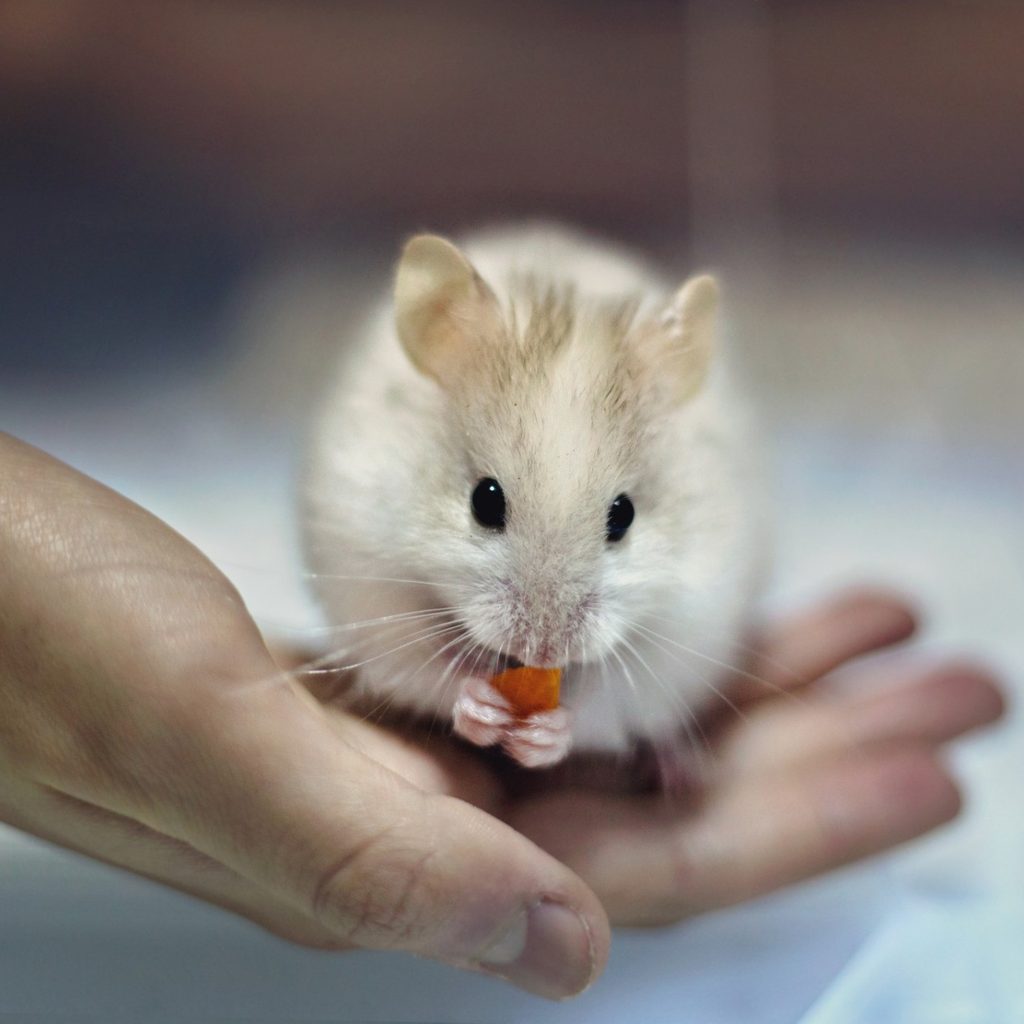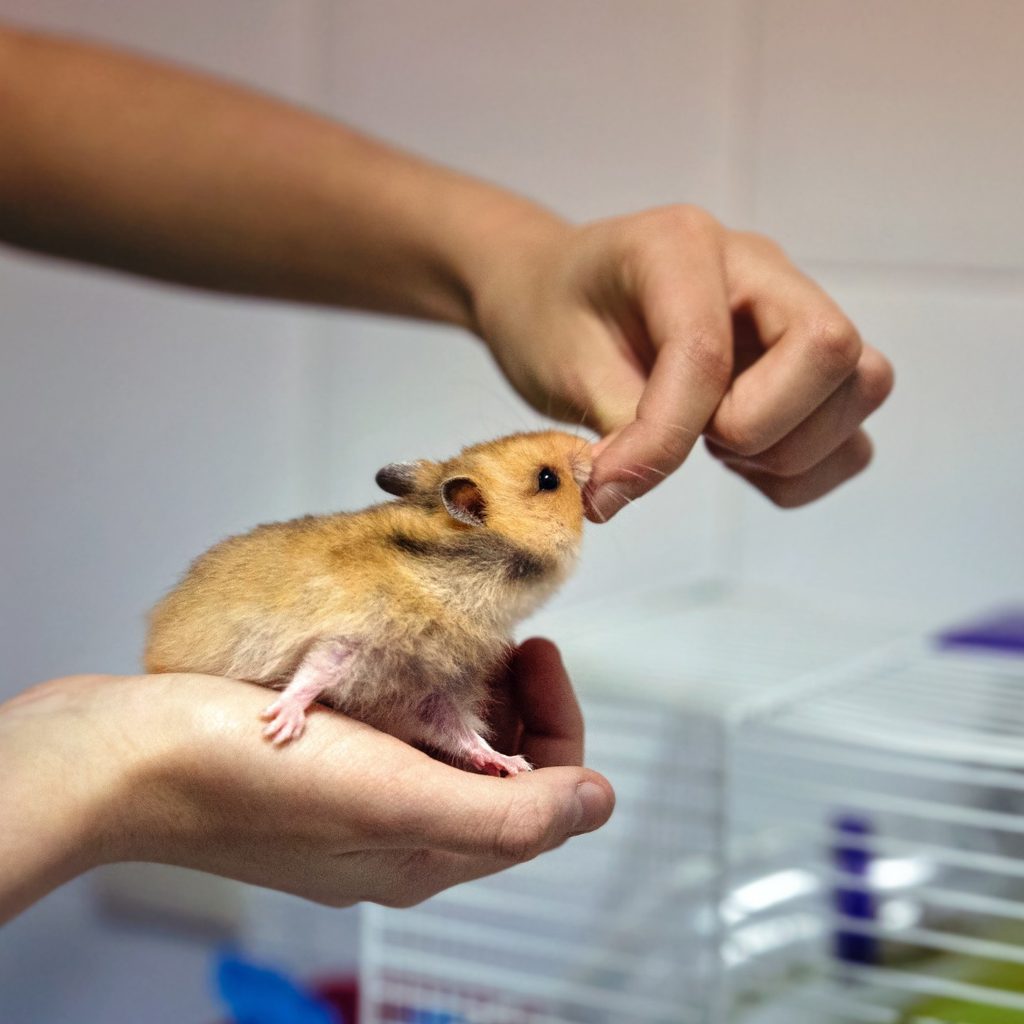Your pet hamster brings you so much joy, and you can return the favor with healthy hamster food. What should you be feeding your pet hamster? What types of healthy meals will support your pet’s overall well-being? What treats will provide a little bit of wonder into your hamster’s life?

Pellets
Hamster food in the form of pellets offers complete nutrition without worrying that you’re leaving something out. Hamsters love to chew on them, and the pellets don’t go bad as quickly as veggies or fruits.
The most significant upside to pelleted diets is that hamsters can’t pick through to find their favorite little pieces. While you may put together a complete diet through various seeds, veggies, and fruits, your hamster probably only picks out its favorites.
Pellets are uniform in nature and look like little cookies or biscuits. There’s nothing to pick out, so your hamster gets a complete meal no matter what.
Seed mixes
Seed mixes are a little more exciting to your hamster but also riskier. Some seed mixes also include pellets or dried fruits along with the different seeds. Hamsters will pick through to find their favorites and try to leave the rest.
Feeding seed mixes provide balanced nutrition, but the key is to allow your hamster to empty the food bowl entirely before adding in more mix. If you have more than one hamster, you may want to supplement with only pellets periodically.
Just seeds aren’t going to provide the right nutrition for your hamster, so it’s best to mix them. This is something you should pay close attention to because you don’t want to leave your hamster’s bowl empty, but refilling could allow your hamster to eat only certain things it likes.
Fresh foods
Hamsters get the most excited about fresh foods, and they often make great treats to supplement both your hamster’s diet and to provide enrichment. There are quite a few safe fruits and veggies you can use as part of your hamster’s menu, including:
Most greens — Greens provide essential nutrition and fiber for your hamster and help alleviate the chewing urges. They’re low in calories but provide vital nutrients and water.
Fruits — Things like bananas, apples, strawberries, and blueberries provide a sweet treat for your hamster. They are nutritious and low in calories, but try not to feed too much of these to your hamster or it may not eat the regular food.
Vegetables — Things like peas, sweet potato, or squash could also provide a nutritious snack for your hamster. Be sure you clean the bowls thoroughly so you don’t leave spoiled food accidentally.
Whole grains — Whole grain toast or bread can provide fiber and makes a fun treat when you don’t have fresh veggies or fruits available.
Mealworms, eggs, and other proteins — Be sure you get mealworms from reliable sources or provide a bit of protein for your hamster. If you use something like chicken, make sure it’s cooked thoroughly and leave the seasoning off.
Foods to avoid
There are foods you must avoid for your hamsters. Some are dangerous, while others could cause digestive issues. The biggest thing to remember is to avoid any spices, salts, or harsh foods.
Sugary foods — Sugar isn’t suitable for your hamsters and could deteriorate their health. Leave these off the table altogether.
Citrus — Citrus fruits are irritating to your hamster’s digestion. Stick with small berries or bananas instead.
Chocolate — Same as sugary foods, chocolates are dangerous.
Other foods — Rhubarb and raw rhubarb, apple seeds, garlic, onions, almonds, or raw beans are all no-nos.
If you aren’t sure if you can feed something to your hamster, research it first. Hamster digestive systems are different from humans or even other pets; don’t feed anything that you aren’t sure about.
Getting portions right
The most significant portion of your hamster’s meals should be something like pellets. They’re easy to use, and you know that your hamsters always have a coordinated, complete meal. If you want to use a seed mix, it’s helpful to have pellets within the mix.
The seed mixes should have a variety of seeds, and you can add in veggies every once in a while. Make sure the hamster empties the bowl to ensure a complete meal. The addition of vegetables and fruits can be a great option, but make sure that you clean the container thoroughly.
Fruits should be given infrequently so that your hamster continues to eat pellets or seeds. They’re great as an occasional treat.
Give your hamster the right foods

The suggestions here are easy to measure, and providing your hamster with a variety of foods and treats that can help with bonding and mental enrichment. Those pellets are foolproof, but just like humans, hamsters may need something more exciting every once in a while.
Take your hamster’s health and well-being seriously so you can enjoy your hamster’s company for as long as possible. An occasional treat plus the right foods equal a happy hamster.


